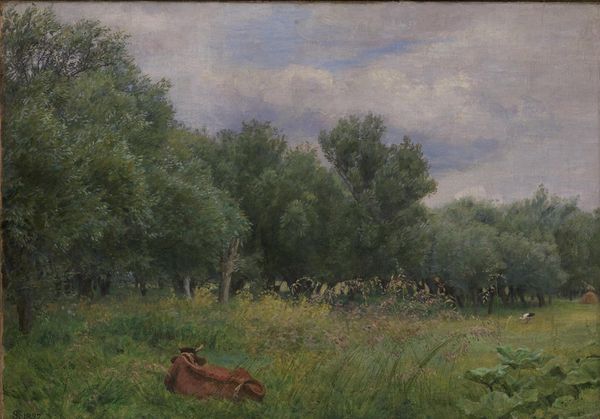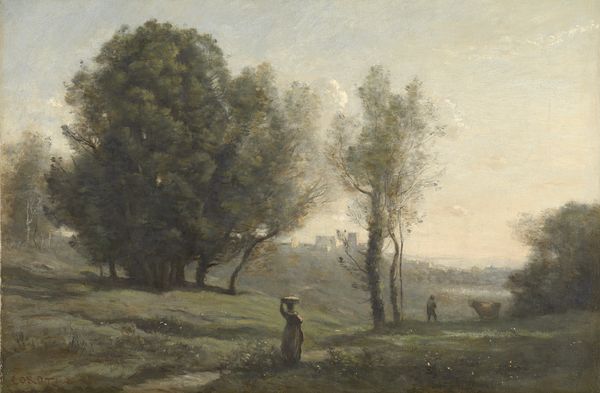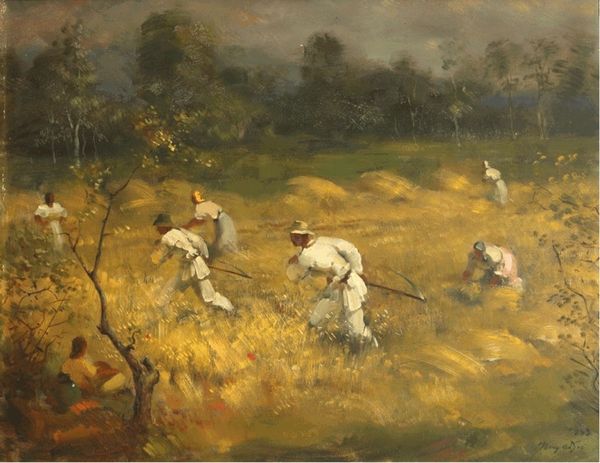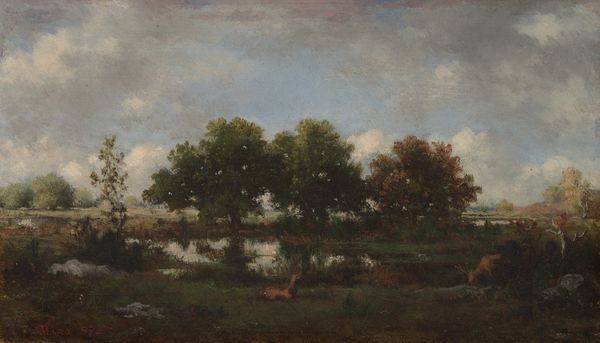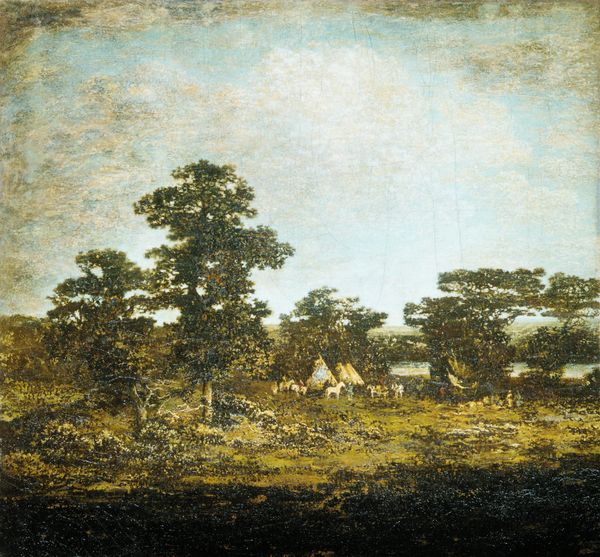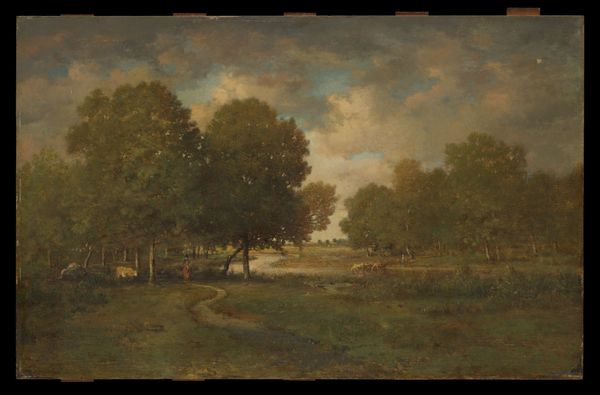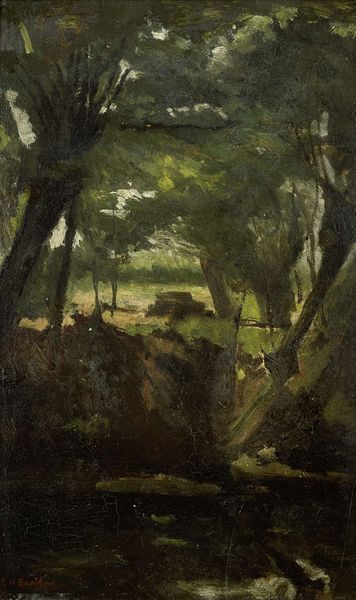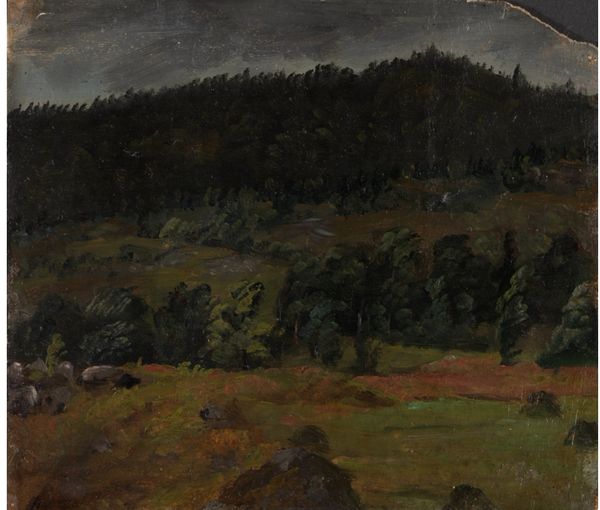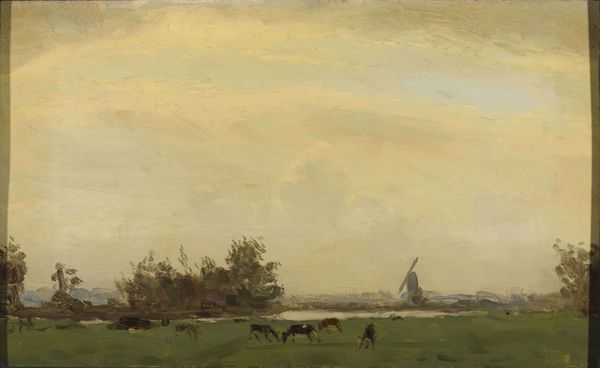
Dimensions: height 27 cm, width 35 cm, depth 7 cm, weight 3 kg
Copyright: Rijks Museum: Open Domain
Curator: What strikes me immediately is the incredibly tactile quality of this small canvas. It’s just loaded with paint. Editor: Well, let’s dive into the context. This is Willem Witsen’s “Moestuin,” or “Vegetable Garden,” dating from 1885-1922. It’s oil on panel, currently housed here at the Rijksmuseum. What I find interesting is its grounding in a specific type of labor – the cultivation of one's own food, and how that's changed over time, in relation to urban development. Curator: I see that too. You know, you can almost feel the artist working en plein air. The rapid, almost choppy brushstrokes capture a sense of immediacy. And there's something quite democratic about focusing on the everyday labor in a simple garden. We are so far away from, say, the courtly genre paintings of previous eras, you know? The brushwork shows the labor and time in making. Editor: Exactly. This work provides a space for a critical investigation of rural versus urban spaces, especially at a time when cities were rapidly expanding and industrializing. How was labor represented, valorized, and by whom? Here, we have a lone figure working the land, and the landscape, with all of its attendant trees and rough textures, is dominant, yet clearly structured. Curator: It makes me think about the availability of leisure time. If someone is growing their own food, it isn't about pure economic production or leisure. Is that different from a garden ornament? It also seems related to a certain kind of class identity. Editor: Absolutely. It reflects broader shifts in the perception of manual labor, from a historical position of subjugation to the potential of individual agency and connection with nature. Witsen isn't just depicting a scene, he is inviting a discussion on our relationship with the environment and with labor practices, at a particular time. Curator: So the visible labor both in the garden, and in the artist’s painting, makes a quiet commentary on societal values. A very humble picture, though full of subtle complexity. Editor: It certainly gives a lens through which we can analyze these critical and on-going historical and cultural transitions. The garden as a reflection of society… fascinating.
Comments
No comments
Be the first to comment and join the conversation on the ultimate creative platform.
